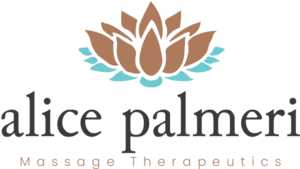What is Infant Flat Head Syndrome or Plagiocephaly?
Infantile flat head syndrome, clinically known as plagiocephaly, is a condition that affects many newborns and infants. In this article, we will discuss how many parents are now using craniosacral therapy to treat infant flat head syndrome, also referred to as plagiocephaly. Plagiocephaly occurs when a baby’s head develops a flat spot, often as a result of repeated pressure on one part of the skull. This condition can be distressing for parents, who naturally want the best for their child’s development and well-being. While plagiocephaly is typically harmless and doesn’t usually affect brain development, it’s understandable that parents seek solutions to correct it.
Craniosacral Therapy, a New Way to Treat Flat Head Syndrome
In recent years, there has been growing interest in alternative therapies for addressing plagiocephaly, particularly in approaches that are gentle and non-invasive. One such approach gaining attention is craniosacral therapy (CST). Craniosacral therapy is a form of bodywork that focuses on the craniosacral system, which includes membranes and cerebrospinal fluid that surround and protect the brain and spinal cord.
How Does Craniosacral Therapy Work?
CST operates on the principle that gentle touch and palpation of the craniosacral system can lessen tension and restrictions in the body, promoting natural healing and balance. While originally developed by osteopathic physician Dr. John Upledger, CST has gained popularity beyond osteopathy and is now practiced by various healthcare professionals, including massage therapists, chiropractors, and physical therapists.
So, how does craniosacral therapy to treat infant flat head syndrome? The treatment typically involves a series of gentle, hands-on techniques applied to the baby’s head, neck, and spine. Practitioners use light touch to assess the craniosacral rhythm and identify areas of tension or restriction. Through subtle adjustments and releases, they aim to restore mobility and alignment in the cranial bones and other tissues throughout baby’s body.
Craniosacral therapy for Infants is Gentle
One of the key benefits of craniosacral therapy is its non-invasive nature. Unlike more aggressive interventions such as helmet therapy or surgery, CST involves no forceful manipulation or external devices. Instead, it relies on the body’s inherent ability to self-correct and heal. Naturally, this makes it an appealing option for parents who prefer a gentle approach for their infants.
Moreover, craniosacral therapy has been well proven to be effective and well-tolerated by infants. The gentle touch and soothing techniques used during treatment promote relaxation and healing, which can be beneficial for both the baby and mom. Many parents report improvements in their child’s sleep patterns, breastfeeding challenges, and overall demeanor following CST sessions.
While craniosacral therapy holds promise as a complementary approach to managing plagiocephaly, it’s essential to approach it with realistic expectations. Not all infants will respond in the same way, and the effectiveness of CST can vary depending on individual factors such as the severity of the flat spot and any underlying contributing factors.
Finding a Qualified Craniosacral Infant Therapist
As with any issue affecting your child, it’s important to seek out qualified and experienced craniosacral therapists who have specific training in working with infants. Practitioners should have a thorough understanding of infant anatomy and development as well as experience to ensure safe and effective treatment.
Parents Can Try Multiple Approaches to Treating Infant Flat Head Syndrome
In addition to craniosacral therapy, parents can explore other strategies to address plagiocephaly and promote healthy head shape development in their infants. These may include repositioning techniques during sleep, supervised tummy time during awake hours, and regular monitoring by a pediatrician or healthcare provider.
In conclusion, craniosacral therapy offers a gentle and non-invasive approach to treating infant flat head syndrome (plagiocephaly). By addressing tension and restrictions in the craniosacral system, CST aims to promote natural healing and restore balance in the baby’s head and body. While it may not be a one-size-fits-all solution, many parents find value in incorporating craniosacral therapy into their child’s care plan, alongside other recommended strategies. As with any therapeutic intervention, it’s essential to consult with healthcare professionals and make informed decisions based on individual circumstances and needs. Luckily, there are many ways to help infants with flat head syndrome. Finding a local craniosacral specialist can be the first step to helping your baby with plagiocephaly.
Alice Palmeri, LMT works in Southwest Portland, Oregon where she specializes in massage therapy for children. License # 23983



